SHIB and AVAV Inscription join forces to launch ERC404
Shiba Inu launches SHEboshis NFTs on ERC-404, enhancing liquidity and ownership, despite a minting bug resolved by increasing supply.
 Sanya
Sanya
Recursive inscription as A recent major update of Ordinals has opened up a broad space of imagination for the development of the composability of the Ordinals protocol.
The recursive inscription is An inscription parsing standard, PFP collection inscriptions can be created by uploading the corresponding element characteristics, which can be combined and spliced without uploading or downloading actual images. Recursive inscription has the characteristics of enhancing interoperability, reducing costs, and allowing the inscription size to exceed the 4MB limit.
Based on recursive inscriptions The creative directions include: disassembly and combination of inscriptions, Bitcoin music, Bitcoin chain games, generative art, decentralized websites, etc. This article details some typical cases combining recursive inscriptions, which show us the powerful potential of recursive inscriptions.
Recursive inscriptions are also It faces some challenges: whether the relevant parser for off-chain rendering can be parsed quickly when the recursion level increases; whether the relevant parser for off-chain rendering can be parsed quickly when the number of reference inscriptions increases. In theory, the games or NFTs generated by recursive inscriptions can be infinitely complex and infinitely sophisticated. However, due to the limitations of the BTC network itself, it needs to be implemented through indirect technical solutions.
Recursive inscriptions allowed Inscriptions interact with each other to realize new use cases. Generative art, on-chain display and efficient storage have now become a reality. We can report back to generative art, chain games, metaverse and other tracks where recursive inscriptions are expected to be deeply adopted. Expect and believe that the killer application of the future is brewing.

The birth of the Ordinals protocol provides Bitcoin with the functions of numbering and inscription, thereby broadening the product range of the Bitcoin ecosystem and bringing Huge application potential.
In the past few months, we have seen the Ordinals track gradually grow from obscurity into an ecosystem. During this period, the Ordinals protocol has also experienced important changes. upgrade, and produced a series of derivative protocols:

In our Ordinals series of articles in June, we have also updated the detailed introduction to Ordinals and various BRC20 derivative protocols (link: https://medium.com /@gryphsisacademy/diving-into-ordinals-how-to-bet-on-bitcoin-ecosystem-as-halving-approaches-3486db8cbf12)
, among them , I have to mention a recent major update in Ordinals - the emergence of recursive inscriptions.
Recursive inscription was announced on Github on June 12 by Raph, the new chief maintainer of the Bitcoin protocol Ordinals. It further integrates the creator of the Bitcoin protocol Ordinals The recursive inscription 2167 update proposed by Casey Rodarmor was merged into the Ordinals code, thus opening up a vast space of imagination for the development of composability of the Ordinals protocol.
This article will explore the principles of recursive inscriptions and their impact on Ordinals, and further explore possible innovative application directions of recursive inscriptions based on existing cases.

Since the end of December 2022, Casey Rodarmor released the Ordinals protocol, introducing NFTs to the Bitcoin network through Ordinals and Inscriptions (ordinals and inscriptions).
The protocol can add arbitrary content, such as text, images, videos and even applications, to sequentially numbered sats (the smallest unit in Bitcoin) to Create unique digital artifacts that can be transferred over the Bitcoin network. Below we sort out the important technical principles involved in the Ordinals protocol:

Bitcoin uses a payment model called "Unspent Transaction Output" (UTXO, Unspent Transaction Output), and all balances are stored in a list of UTXO . Each UTXO contains a certain number of Bitcoins, owner information, and indicates whether it is available.
In Bitcoin transactions, each transaction has inputs and outputs. The input is a reference to an existing UTXO, and the output specifies the new address and amount. After initiating a transaction, enter the relevant UTXO to lock it to prevent reuse until the transaction is confirmed. After confirmation, the input UTXO of the transaction is removed and the output generates a new UTXO.
The total input amount of a transaction usually exceeds the total output, and the difference is called a network fee, which rewards the miners who package the transaction. Network fees are proportional to transaction complexity, and multi-input-output transactions generally require higher network fees.

There are a total of 21 million * 10^8 satoshis on the Bitcoin network. How does the Ordinals protocol uniquely number each satoshi and track the account it belongs to?
Under the Ordinals protocol, satoshis are numbered according to the order in which they are mined. Ordinals’ metadata is not stored in a specific location, but is embedded in the transaction’s witness data, which is “engraved” like an inscription on the specific part of the Bitcoin transaction that is attached to the specific part of the transaction. Satisfied.
This process is implemented through Segregated Witness (SegWit) and "Pay-to-Taproot (P2TR)", which can Any form of content (such as text, images or videos) is inscribed on the designated Satoshi.

SegWit is an important protocol upgrade for Bitcoin that separates some transaction signature data (witness data) from the transaction itself, thereby reducing the size of the data stored in Bitcoin blocks. This move expands the block’s capacity, allowing it to accommodate more transactions, increasing the network’s transaction processing capabilities and lowering fees.
The SegWit protocol upgrade introduces a new witness field in transaction outputs to protect privacy and improve performance. While Witness Data was not designed to store data, it actually provides us with the opportunity to store metadata such as inscriptions.
The Taproot protocol upgrade introduced in 2021 allows different transaction conditions to be stored more privately on the blockchain. Through the Taproot script path, we are able to store inscription content in payout scripts, which have almost no restrictions in terms of content. Moreover, thanks to Taproot's discount mechanism, storing inscription content becomes more economical, saving a lot of resources.
The Ordinals protocol cleverly uses SegWit to relax the size limit of content written to the Bitcoin network and store the inscription content in the witness data, which can store up to 4MB of elements. data. Taproot makes it easier to store arbitrary witness data in Bitcoin transactions, allowing Ordinals developer Casey Rodarmor to reuse old opcodes (OP_FALSE, OP_IF, OP_PUSH) to describe content encapsulated as inscriptions to store arbitrary data .

Commit: The first step in the commit transaction is to create an output pointing to the Taproot script containing the inscription content. This output uses the Taproot storage format. At this time, the inscription data has been linked to the UTXO of the transaction output, but has not yet been made public.
Reveal: At this stage, by using the UTXO corresponding to the inscription as Enter to initiate a transaction. At this time, the corresponding inscription content is disclosed to the entire network.
Through the above two steps, the inscription content has been bound to the UTXO it is engraved in. Next, inscription is performed on the first satoshi corresponding to the input UTXO, according to the satoshis described previously. The content of the inscription is included in the input showing the transaction. This special imprinted satoshi can be transferred, bought, sold, lost, and recovered.

After understanding the basic principles of Ordinals, let's look at recursive inscription:
The Ordinals protocol introduces the ability to completely inscribe files on the chain in Bitcoin , before the advent of recursive inscriptions, ordinal numbers were like isolated and finite islands. Although you can inscribe text, images, and code, they cannot interact with each other.
However, with the introduction of recursive inscriptions, things are about to change. Inscriptions can now request content from other inscriptions using the special "/-/content/:inscription_id" syntax. This allows users to use less capacity and lower fees when creating inscriptions on the Bitcoin chain.
Recursive inscription is a standard for inscription analysis. Its syntax is essentially similar to using code to find images. You can create a PFP collection inscription by uploading the pattern, color, action and other element characteristics corresponding to the image, and then you can combine and splice the corresponding elements that already exist on the chain, without uploading or downloading the actual picture.

Recursive inscriptions have the following characteristics:
Through the unique self-referential properties of recursive inscriptions, We have the opportunity to break the shackles of previous inscription methods and get rid of the awkward status of each inscription being isolated and irrelevant, thereby opening up the possibility of creating free combinations.
The recursive inscription keeps its size small in the form of text code, which not only reduces the cost, but also makes the size of the inscription more flexible. Breaking through the 4MB limit of Bitcoin blocks.
This advancement enhances interoperability, programmability, and scalability, injecting more possibilities into the Bitcoin chain and creative imagination.
From a protocol level, the future prospects are very broad, with rich narratives waiting for developers and users to construct and use them. .
However, there are still some challenges, such as whether inscriptions can be collected and indexed on the platform, which will determine its development. speed and widespread recognition.

The emergence of recursive inscriptions unlocks many powerful innovative applications. Recursive inscriptions have the advantages of high flexibility, splicing and combination, and low cost, which bring unlimited new possibilities to inscriptions. The following article will introduce the potential innovation and application directions of recursive inscriptions with some specific cases.
Through recursion, Inscriptions can easily reference the code of other Inscriptions. The contents of one inscription can now be used by many other inscriptions. This new composability opens up a realm of possibilities that we have barely explored, such as the ability to inscribe content in the form of complex pictures, videos, 3D games, etc. on the chain. Recursive inscription makes it possible to build an intranet. More possibilities include inscription secondary creation, GitHub decentralization, NFT combination fragmentation, etc. Using recursive inscriptions, we can achievethe following ideas:
Here we introduce some typical cases in detail, which show us the powerful potential of recursive inscriptions.

By further combining the various preliminary plans mentioned above, it is possible to further realize the combination of various collections, the second creation of inscriptions, etc.: For example, a1 and a2 within a collection are combined, a collection Combined with b collection. On this basis, it is expected that native interactive generative art that is truly community-driven will be born on the BTC chain.
Let’s look at the first case: 1Mask.
This is a mask-themed on-chain generative art project on the BTC chain. The 1Mask project cleverly integrates Ordinals' recursive technology, and the whole is intertwined with three elements: template, algorithm and inscription generation.
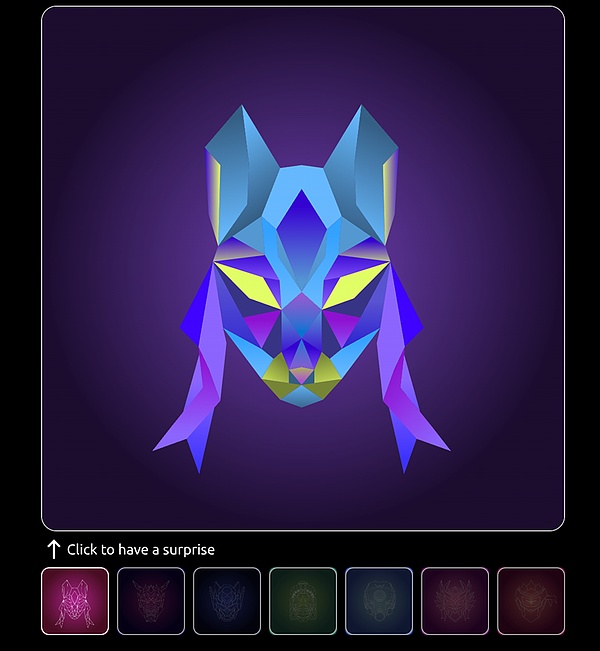
Source: https://1mask.io/
The template section contains a total of seven types Inscriptions correspond to seven unique types of templates, and their format follows image/svg+xml.
The basic principle of the algorithm part is to use the user's wallet address as a seed and use random functions to create a variety of different color combinations for mask models. color.
The inscription generation mechanism uses recursive technology to reference algorithmic inscriptions. Each mask inscription is embedded with the HTML code needed to build the final colorful mask image. This is achieved by using a random seed to execute the code embedded in the algorithm inscription, while filling the random seed with user-specific on-chain data (such as a wallet address), making it random but relevant to the user. Therefore, when the same wallet address uses the same template, the generated results will always be consistent.
Whenever a new mask inscription is created, it incorporates user-specific on-chain details and references the algorithmic inscription. With the power of recursive inscription technology, once a newly created mask inscription enters the market or is indexed by a wallet, it autonomously activates the reference code contained in the algorithmic inscription. These codes run with user-specific on-chain data as input, ultimately displaying a unique, personalized mask image.
In the Bitcoin network environment, the data contained in the inscription is immutable, thus ensuring its integrity. This characteristic determines that the real-time images presented based on this immutable inscription data are also immutable. As long as the random seeds and algorithms involved in the mask inscription are correct, users can verify the authenticity and accuracy of the creation process at any time.
Behind this project, 1Mask further launched a standard called BRC721Auto, proposing that fully on-chain generated art consists of at least two inscriptions: one is code The inscription, the second is the inscription of the personalized parameters.
In code inscription, we need to encode an algorithm that can automatically generate HTML DOM based on the content of parameters. The DOM can be a canvas, SVG, or other content that can be recognized by the browser and rendered as a graphic accordingly.
Of course, code inscriptions can also reference the contents of other inscriptions to complete their algorithms.
In the parameter inscription, we need to define an HTML and define a global parameter p in it to reference a Code Inscription. When ordinary browsers try to display this Parameter Inscription, they will recognize the global parameter p and automatically execute the start () function in the Code Inscription to add or modify the DOM of the current HTML, and finally render the content of this HTML. Therefore, parameter inscriptions can be regarded as the ultimate NFT (Non-Fungible Token).
With the help of Recursive Inscription technology, the code required to generate graphics, the code execution process, and the verification process are all under the protection of the Bitcoin blockchain consensus . Unless someone is able to launch a 51% attack on Bitcoin, no one can control the generation process of the ERC721Auto NFT, which will be performed autonomously by the Bitcoin ecosystem.
1Mask further proposed three major standards for generating art projects on the entire chain. The three major standards are:
Decentralized storage of code that automatically generates graphics < /p>
Decentralized execution of code based on user-provided parameters to generate personalized graphics
Decentralized verification of the correctness of generated results
According to the above Standard, it is not difficult to find that on-chain art based on recursive inscriptions has the following characteristics:
Unique Nature and randomness: The work must be generated through algorithms and smart contracts, be irreplaceable and unique, and can prove random on-chain revelation. It also needs to have certain artistic and aesthetic value.
Interactivity: Users can interact with and control the work.
Decentralization: Art is completely on the chain, completely decentralized, and no centralized institution or individual can Control them.
Reuse code and based on Ordinals' work
Compared with generative art projects on other chains such as Ethereum, the generative art based on BTC recursive inscriptions is completely on-chain generative art, which is independent and does not rely on any off-chain resources. Decentralized generative art.

Due to the flexibility of recursive inscriptions, this provides a stage for geeks to display their talents. Projects rich in geek spirit further explore the boundaries of various possibilities of Ordinals technology.
"Orbinals" is a typical representative of this. It is a geek project with no Twitter and no official website. All the content of the project is based on Uncommon sat. Yes, according to the latest price of f2pool, as of August 20, the unit price of Uncommon sat has reached more than 366 US dollars.
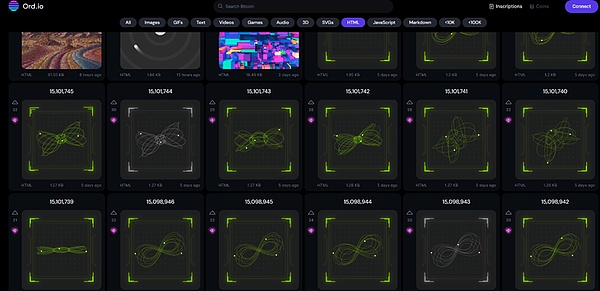
Source: https://www.ord.io/?satributes=uncommon&contentType=html&sortBy=newest
If you directly open the Orbinals collection series website, you will find that some of the content referenced by each picture of its celestial motion series is the same after opening, and the parameters inside will be somewhat different. In its recursion After digging into the quoted content in the inscription, we can find that the real secret about the project is hidden in this reference link (https://ordin-delta.vercel.app/content/b5091b76f78d73677ad6b81e4785b0dfebc62b1079a0bf78b8366859a1ffacbci0). The full name of Orbinals is "Orbinals: Three Body Orbit Artifacts on Ordinals”, behind it is the use of HTML and JavaScript to program the movement of three objects, built on the basis of two-body simulation code.
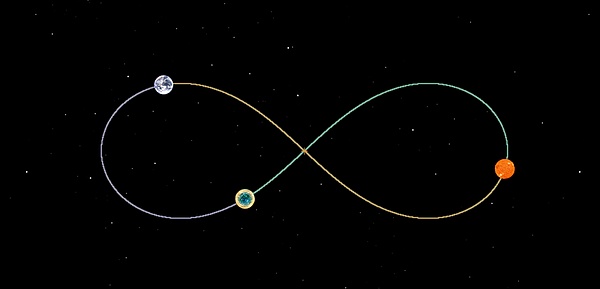
Source: https://evgenii.com/blog/three-body-problem-simulator/
With the support of mathematical and physical equations, the beauty of celestial motion is presented on the Bitcoin chain in a concise way.
And since there is no social media such as Twitter, Discord, or official website, the project will most likely use a very geeky approach, and future information will be presented On sats that the team has mastered themselves.
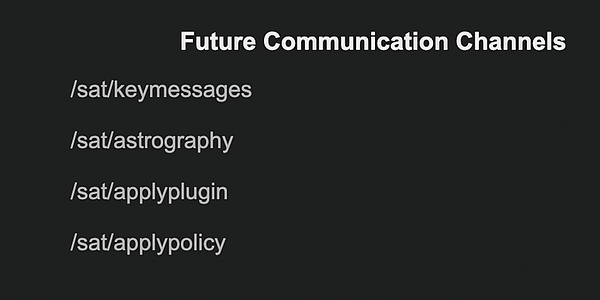
Source: https://ordin-delta.vercel.app/content/b5091b76f78d73677ad6b81e4785b0dfebc62b1079a0bf78b8366859a1ffacbci0
In addition to the four channels disclosed by the project party, there is also an Easter egg hidden: in the inscription content quoted by the project (https://ordin-delta.vercel.app/content/4f59fc257a7c78d4074dcd7a4a55360d56986f474700adc7dc37ac231901fc40i0), there is a string of instructions hidden in the code: Future Communication channels on /sats/ acknowledge, and acknowledge happens to be a sats belonging to the team.
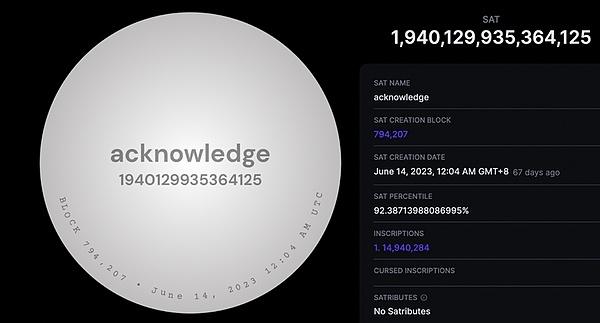
Source: https://www.ord.io/sat/1940129935364125

BRC69 is a new standard for creating recursive collections released by Luminex (https:/ /github.com/luminexord/brc69), this standard leverages recursive inscription to optimize the cost of inscribing on Bitcoin using ordinal protocols, helping to launch recursive sets on Bitcoin. Additionally, BRC69 offers a high degree of flexibility and opens the door to more enhancements and capabilities, paving the way for more interesting on-chain features such as pre-show functionality and more.
With BRC69, the cost of inscriptions for the Ordinals collection can be reduced by over 90%. This reduction is achieved through a 4-step process:
Record Features
Deploy collection
Compile collection< /p>
Create assets
All of these processes can be performed without the need for external indexers, as long as collection creators publish official inscription lists for their collections in accordance with current requirements. Additionally, images will be automatically rendered on all front-end interfaces that have implemented recursive inscription, with no additional steps required.
Orditroops is a recursive NFT based on BRC69. It implements the content of the BRC69 protocol, increases the composability of features, and reduces the space occupied by pictures. Pictures It is quite high-definition, and the flexible combination of soldiers, weapons, and costumes adds a lot of features and fun to this NFT collection.

Source: https://twitter.com/OrdiTroops


Source: https://www.ord.io/3563188a3db53850bba48747293def7bd6b7395e4241b29ec7d49892945cf927i0
OCM is the first 3D NFT project to apply the recursive inscription standard. OnChainMonkey was originally an NFT project created on Ethereum in September 2021. Earlier this year, the OnChainMonkey series emerged as the first 10k series to be engraved on Bitcoin.
As a high-resolution 3D animated inscription, OCM quickly stands out for its detail and quality. Remember, most inscriptions before it were still small text files or low-resolution images. OCM delivers good clarity even on 4K or 8K displays. This quality is achieved with files that are no more than 1 KB in size each, something that OCM’s previous projects have struggled to achieve.
OCM is able to achieve this because it pioneered the use of powerful recursive inscriptions. The first 300 OCMs are inscribed on Bitcoin as consecutive 300 satoshis, starting with block 78 in 2009, ordered on-chain in ascending order of their satoshi count. The OCM builder uses minified code and references the P5.JS and Three.JS libraries for future creators. Users can view and access the library in a browser, automatically decompressing it in the Ordinals protocol when rendering Dimensions Interactive Art.
Through recursive inscriptions, OCM efficiently utilizes block space (each is less than 1 KB) and implements random on-chain disclosure, integrating high-definition quality, Features such as 3D, animation and interactive art all rolled into one.


Source: https:/// /ordinals.com/content/6fd06768414dfc2bd68b55869eea6844864fbf71ee72ec26568520e313c2bda2i0
Enter any word or phrase to generate unique on-chain music, the music engine It is a supporting product of the MUD RPG game "Descent Into Darkness". Music is generated by inputting keywords.
Founder Ratoshi emphasized that ChatGPT played an important role in developing the project's use of music, and that using recursive inscription helped to save significant costs. A special combination of blockchain technology and artificial intelligence that pays homage to the classic music of retro video games.

A game requires multiple component materials such as pictures, front-end, and business logic. If the total size of the materials is less than 4M, it can be completed by inscribing a Sat without using recursive inscriptions.
There are two situations where recursive inscription technology is suitable:
The material itself is large (more than 4M). For example, a background image of 5M cannot be directly engraved on a Sat, but it can be split and put into different Sats for reference and display;
If you want to implement better business logic, for example, if there are 100 Sat inscriptions in a series of games, use is the same JavaScript (JS) file. In this case, it is also suitable to use recursive inscription, because there is no need to re-inscribe the JS file for each Sat.
The HTML (front-end) and JS (business logic) of the game are both engraved on the "Satoshi" of BTC and reference each other. A single-player H5 mini-game can be generated.
The following are 3 examples of such single-player H5 mini-games:
a. Snake Game
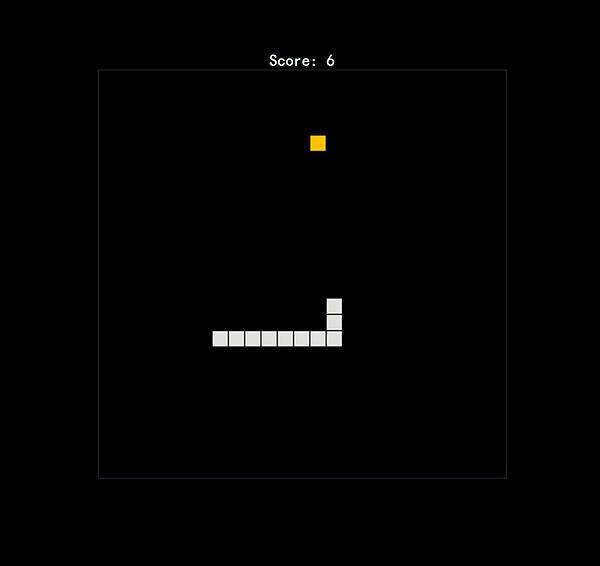
Source: ord.io/431507
Bitcoin Snake Game, this game is a typical H5 single-player game, and it is also a well-known game: Snake. The front-end and execution logic of this game are all written on this Sat, and no recursive inscription technology is used. The total number of NFTs in this series is 100.
Actually, a better way would be to engrav the JS file (business logic) on a Sat, and then use 100 different Sats engraved with HTML to reference ( Or called recursion ) the Sat generated inscription where this JS file is located. This will be more concise.
b. Lianliankan Game
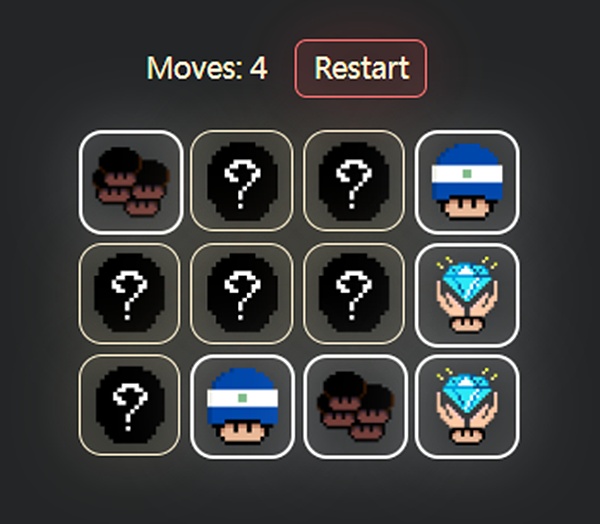
Source: ord.io/18201467< /em>
As shown in the picture, the game is a 3*4 digital grid (this is a simple mode, the complex mode is a 6*6 digital grid) , you can click on two squares at a time. When the two square pictures are the same, they will be fixed and displayed; when they are different, they will be directly displayed as question marks. You will be considered a winner if you complete the task within a certain number of clicks. Limit the number of clicks to test the player's short-term memory.
This game is similar to the familiar Lianliankan game. The JS and HTML of this game are all inscribed in this Sat, but it references the "background image" (as shown below), so it is a simple application of recursive inscription.

Source: ord.io/18201467
c. MUD Game strong>

Source: https://ordinals.com/content/1915ae7d46502199a7d03256efd7f6e2f6aabb8ed7176b34f70b7b8fd778b36ci0
Descent into Darkness is a text-based role-playing game that combines classic MUD game elements and ordinary technology to provide players with a unique gaming experience.
In Descent into Darkness, the player will play an adventurer seeking a way out in the darkness. There are monsters, tasks and BOSS battles in the game. Players need to fight monsters. To complete missions, unlock new missions and obtain gold coins to upgrade equipment and purchase items.
The above three single-player H5 mini-games are very simple applications. As games, they are incomplete. The process of starting, progressing and ending of the game is not included. chain, the game process cannot be archived, and Sat's inscription will not change after the game is over. , only defines the logic of the game, but does not save the state of the game. This is just an initial attempt at BTC chain gaming.

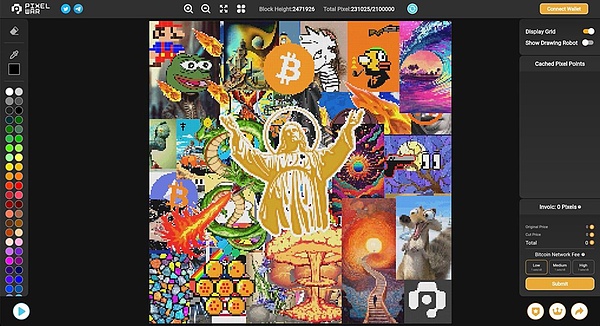
Source: https:/// /twitter.com/btcpixelwar
BTC PixelWar is a multiplayer game on the BTC full chain. The project claims to be a BTC chain The first full-chain multiplayer game on the Internet. Participants create on a 256*256 pixel canvas. You can click on the pixels directly, or you can upload the image to generate pixels and put them on the canvas.
Each Submit will generate an inscription of the latest status of the entire canvas. Each inscription generated references the status of the inscription that was generated last time. The inscriptions are recursive layer by layer. , this may be the project with the most recursions currently on the market, and it is also a landmark application in the field of recursive inscription applications.
The project proposes a completely new standard, "BRC721Cofound", which utilizes recursive inscriptions to enable all Bitcoin users to collaborate on the same canvas, And record its process, each moment is an inscription, depicting what the jointly created canvas looks like at this moment. This inscription is called the "moment inscription", which contains the newly added or updated pixels at this time, and contains the References to previous "moment inscriptions" as well as "code inscriptions" that handle image changes between two moments.
Considering that there may be many people participating in the painting together, rendering the latest canvas state requires deep recursion to load the pixels drawn by everyone. However, this process may cause loading time To solve this problem, "Code Inscription" is designed to take a snapshot of the latest canvas state after the current "Moment Inscription" rendering is completed. This snapshot is then stored in the current Moment Inscription's DOM tree. Therefore, sequential browsers can simplify the rendering process by caching the DOM tree inscribed at each render moment, thereby reducing the number of recursion levels.
Generally speaking, BTC PixelWar is an innovative and iconic BTC multiplayer full-chain game that enables multi-person collaborative creation while The rendering process is optimized and the introduction of the "BRC721Cofound" standard opens up new possibilities for multiplayer game applications on the Bitcoin chain, and also demonstrates the potential of recursive inscriptions in gaming and social fields.

Recursive inscriptions have opened the era of on-chain inscriptions 2.0, making BTC NFTs more and more versatile. It is becoming more and more possible for BTC NFTs to be completely differentiated from NFTs on other chains such as Ethereum. In the future There is a lot of room for imagination/narrative.
Recursive inscriptions directly connect previously independent inscriptions and can reference each other, thus forming the structure of a wide variety of databases. In past articles, we discussed various derivative protocols based on Ordinals. In fact, recursive inscriptions combined with the derivative protocols mentioned above will be able to update by reading other inscriptions and reacting according to their own intelligent instructions. By indexing your own status, you can directly manipulate the status of the protocol, thus forming a coherent set of actions similar to smart contract effects.
At the same time, the huge recursive inscription database gives inscriptions more room for operation and imagination, including basic data, knowledge base, code library, function library, etc. Metadata in various fields, and they can directly reference each other to realize complex logic product applications, so we can look forward to generative art, chain games, metaverse and other tracks where recursive inscriptions are expected to be deeply adopted, and believe in future killers level applications are in the pipeline.
At the same time, recursive inscriptions also face some challenges:
If the recursion level increases, for example, to 10,000 levels of recursion, will the parser related to off-chain rendering be able to parse quickly;
If the number of referenced inscriptions increases, for example, a Sat references 10,000 inscriptions at the same time, will the relevant parser rendered under the chain be able to quickly parse it.
If these two points can be achieved, in theory, the games or NFTs generated by recursive inscriptions can be infinitely complex and infinitely sophisticated. These two problems are limited by the BTC network itself and are difficult to fundamentally solve. However, they can be achieved through indirect technical solutions.

Recursive upgrades in the Ordinals protocol allow inscriptions to interact with each other, enabling new and exciting use cases. With this function, generative art, on-chain display and efficient storage have now become a reality. We can see that developers within the BTC ecosystem are continuing to create and develop various types of creations and developments along the lines of chain games, generative art, etc. Works based on recursive inscriptions are emerging one after another, and various components to build a huge project are slowly being assembled. In the future, we can further look forward to the birth of on-chain games, metaverses, interactive generative art and other projects with complex product logic.

Statement
This report is an original work completed by @GryphsisAcademy students @JellyZhouishere by Gryphsis Academy instructors @979_eth and @Erjiueth gave suggestions for modifications. The authors are solely responsible for all content, which does not necessarily reflect the views of Gryphsis Academy, nor the views of the organization that commissioned the report. Editorial content and decisions are not influenced by readers. Please be aware that the author may own the cryptocurrencies mentioned in this report. This document is for informational purposes only and should not be relied upon for investment decisions. It is strongly recommended that you conduct your own research and consult with an unbiased financial, tax or legal advisor before making any investment decisions. Remember, the past performance of any asset does not guarantee future returns.
Reference materials
[1]https:// github.com/1nftopia/brc721cofound
[2]https://github.com/1nftopia/brc721auto/tree/main
[3]https://medium.com/@gryphsisacademy/diving-into-ordinals-how-to-bet-on-bitcoin-ecosystem-as-halving-approaches-3486db8cbf12
<p );'>
Shiba Inu launches SHEboshis NFTs on ERC-404, enhancing liquidity and ownership, despite a minting bug resolved by increasing supply.
 Sanya
SanyaBinance unveils "Inscriptions Marketplace" for seamless trading and minting of BRC-20 and EVM tokens. Integration with Binance Web3 Wallet enhances user experience, reinforcing Binance's position in the cryptocurrency ecosystem.
 Edmund
EdmundBinance launches the Inscriptions Marketplace, revolutionizing crypto trading by enabling users to buy, sell, and mint tokens, backed by strategic partnerships and a focus on innovation.
 Weiliang
WeiliangBitcoin has come a long way from its origins as “digital cash” for anonymous transactions.
 JinseFinance
JinseFinanceThe addition of many myths of wealth and the continuous influx of capital have made inscriptions even more popular. Recently, as the market value of Bitcoin has heated up, the popularity of inscriptions has also reached a fever pitch.
 JinseFinance
JinseFinanceHit 10 billion MOVEs in three days! Is the MRC-20 "Smart Inscription" a hit? Does the inscription open a new narrative?
 JinseFinance
JinseFinanceInscription, why am I becoming more and more optimistic about Inscription? Golden Finance, why did my attitude towards the inscription take a sharp turn?
 JinseFinance
JinseFinanceBeyond its financial transactions, Bitcoin's blockchain holds hidden messages and inscriptions that add a layer of personalization and expression. This article explores the significance of inscriptions on the Bitcoin blockchain, from identifying senders to embedding codes and expressing opinions. Delve into famous inscriptions like the genesis block message and the hexadecimal code linked to WikiLeaks. Discover how the blockchain becomes a canvas for tributes, political statements, and historical markers, making it more than just a ledger of transactions.
 Bernice
Bernice JinseFinance
JinseFinanceThe aUSD burning proposal of the Acala attacker address has passed, and a total of 1,292,860,248 wrongly minted aUSD will be sent to the honzon protocol at approximately block 1,652,829 and burned.
 链向资讯
链向资讯